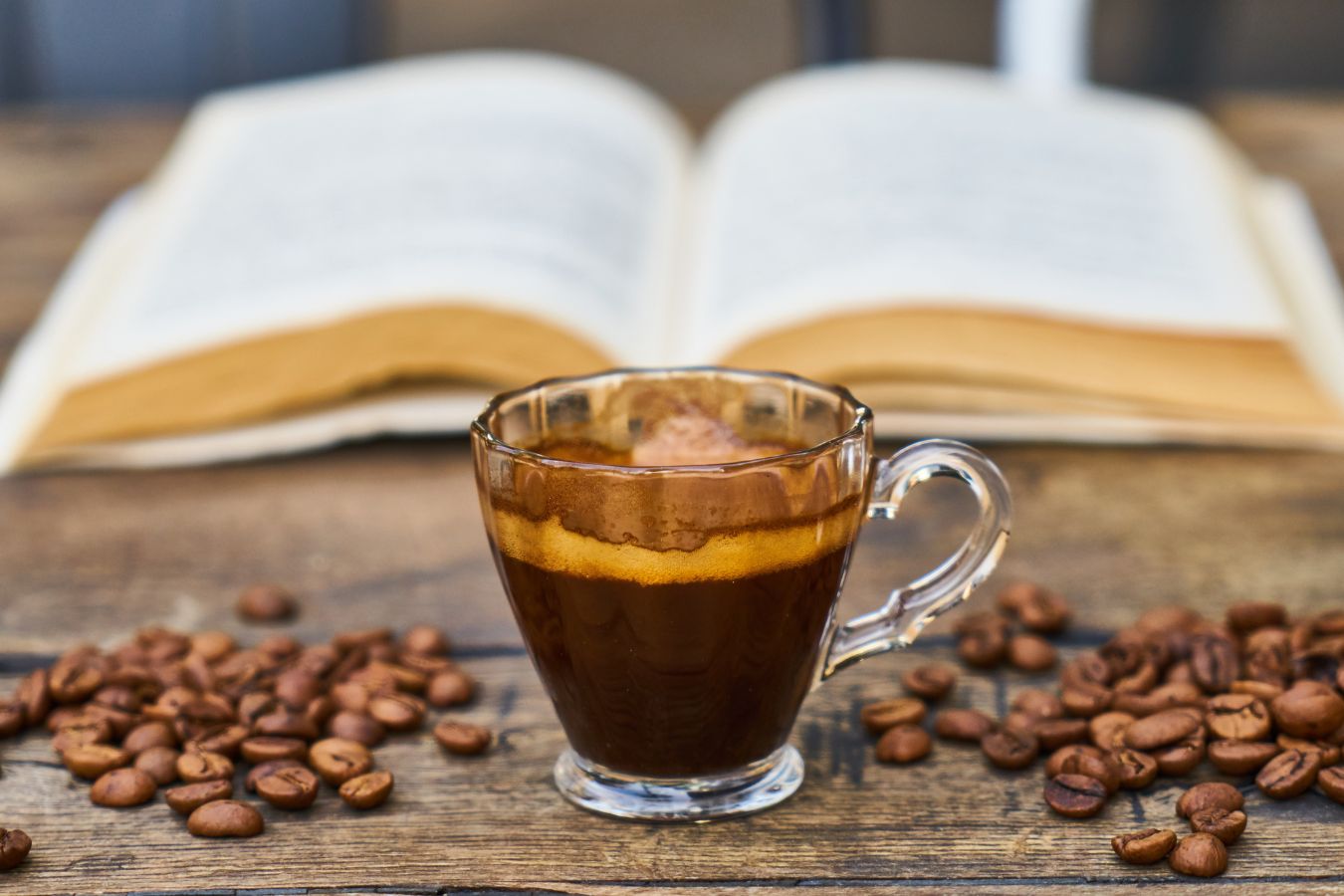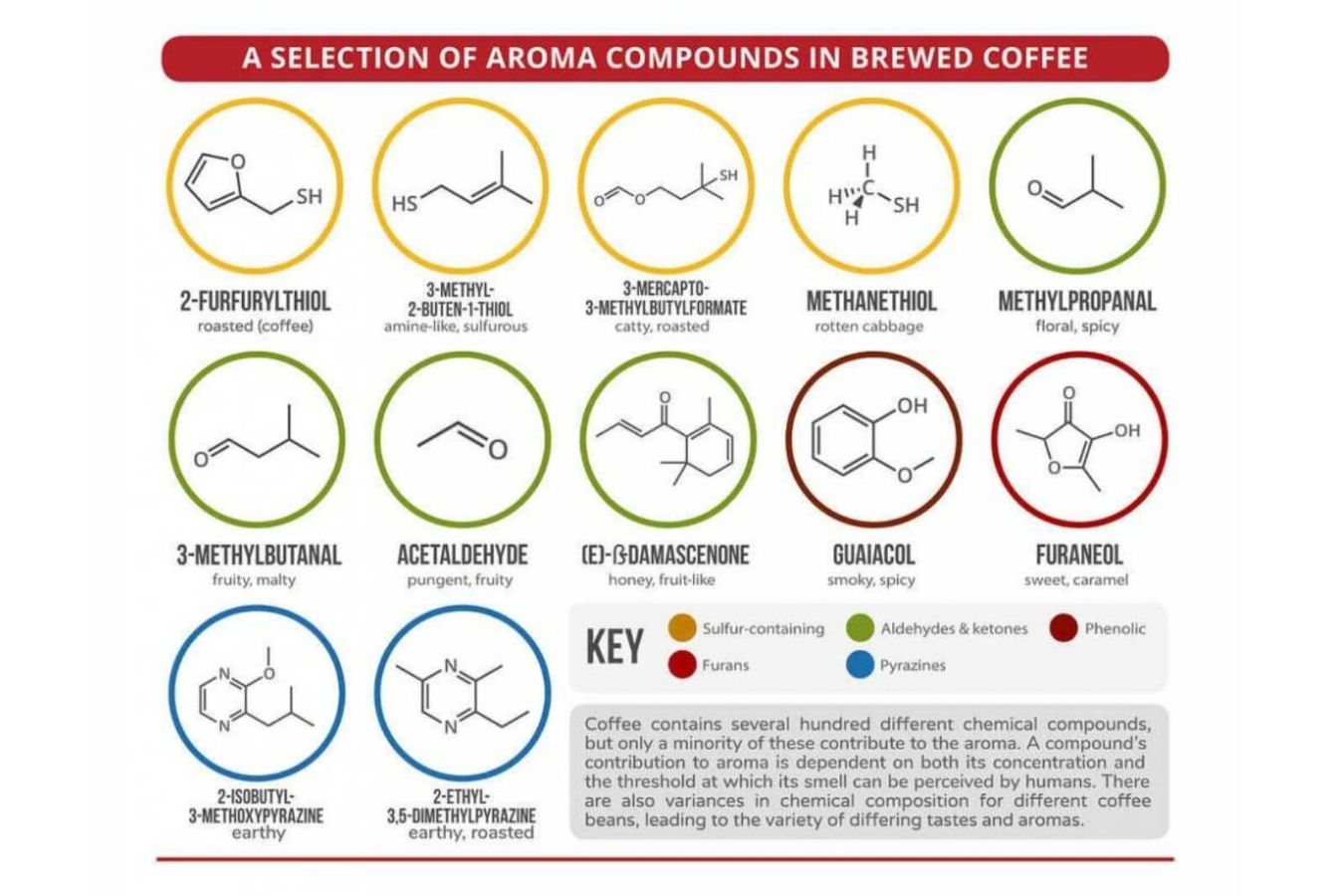
Introduction: Central American coffees
The words most frequently used to describe some of our most beloved coffees, the “Centrals,” are balanced, bright, and clean. Central America, which stretches from Mexico in the west to Panama in the east, is located in the heart of the equatorial zone and is known as the Bean Belt due to its near-perfect growing conditions – soaring mountains, rich volcanic soil, old-growth forests, and predictable micro-climates. Given this near-ideal geography, it’s no surprise that Centrals are consistently ranked among the world’s best coffees.

Unlike many other types of coffee, Centrals have the distinct quality of being exceptional single origins while being beautifully compatible in most blends. In this blog, we will look at the most notable characteristics of Centrals, broken down by country and highlighting key distinguishing features.
The aroma of coffee beans
Two systems are involved in the perception of coffee fragrance. First, we detect the scent by inhaling the direct aroma of coffee through our noses. Second, because the ear, nose, and throat are all related, the smell is also dispersed into the nasal cavity’s receptors when you drink coffee.
How many different flavors does coffee have?
The number of identified fragrance components in coffee grows thanks to more sophisticated and precise sensory analysis methods. The figure has now risen to almost 800. (according to coffeeresearch.org). On the other hand, the coffee scent’s perception is influenced by the compound’s concentration and odor threshold.
To put it another way, learning the names of 800 fragrance components is a lot easier than learning how these scents mix with the sense of smell to create the “smell of coffee.”
The odor threshold is the smallest amount of aroma that the sense of smell can detect.
So far, we’ve agreed on the variety of scent components in coffee, but what gives these aromas their distinctive characteristics? Why can’t we smell it when the berries are still fresh if it’s because of the quality of each coffee variety and its availability in the beans?
The chemical processes that give coffee its aroma
We feel that there must be an impact that releases the scents from the fresh beans, that this effect is not far away, and that it is the roasting process – a time when complicated reactions occur. These processes break down the organic components in the particles into smaller odor molecules and are split into seven groups:
1. The Maillard reaction A browning process between nitrogen-containing molecules (amino acids, proteins, trigonelline, etc.) and carbohydrate components, formally known as a browning reaction.
2. Strecker decomposition reaction is a chemical reaction that converts a – amino acid to an aldehyde (aromatic substance)
3. Amino acid decomposition, particularly sulfur-containing amino acids
4. Caramelization reaction, commonly known as sugar breakdown reaction (carbohydrate).
5. The breakdown of trigonelline. Trigonelline is an alkaloid in coffee that produces a bitter taste (bitterness) when heated. Trigonelline decomposes into two significant compounds: pyridine and nicotinic acid, and its decomposition might be regarded as a substantial reaction. After roasting, the initial process aids in shaping the prominent flavor of the coffee.
6. Decomposition of phenolic acids, particularly quinic acid.
7. Reaction of lipid (fat) breakdown

Finally, the combination of chemicals created due to the preceding processes is essential in the diversity of coffee flavors after roasting.
The “coffee aroma” is made up of 150 different components
In scientific research titled “The Flavor of Coffee,” Clarke, R. J identified 150 primary components that make up the “coffee scent,” including 56 carbonyl compounds and nine sulfur compounds. Seventy-four furans, ten hydrofurans, 37 pyrroles, nine pyridines, two quinolines, 70 pyrazines, ten quinoxalines, three indoles, 23 thiophenes, three thiophenes, 28 thiazoles, and 28 oxazoles; 300 heterocyclic compounds, comprising 74 furans, ten hydrofurans, 37 pyrroles, nine pyridines, two quinolines, 70 (28).
Coffee aroma evaluation using the senses
You might not be able to name the chemical ingredients above even if you delve deeper into the intricacies of coffee odours like a cupper. Instead, we can divide coffee’s “fragrance” into three major sensory groups: enzymatic, sugar browning, and dry distillation.
You won’t find these taste nouns on the coffee flavor circle since we can’t smell “sweet,” “salty,” or “sour,” but we can taste them. You can see how coffee smells like raisins, chocolate, oranges, lemons, or anything else through your scent memories. To truly understand the following principles through smell, you must practice as much as possible.
Coffee flavor: Fruity flavor – Enzymatic
Because the coffee we roast, ground, and the brew is the seed of a fruit, it’s only natural that the source keeps some of the fruity attributes of the vegetable origin, even when burned. Its. Enzymatic characteristics refer to the natural fruity and herbal scents we detect in coffee.

Some coffees have superior enzyme qualities than others, which may be linked to the species’ features, the cultivated and processed method, the degree of roasting, and the preparation ratio. According to analysts, many Latin American coffees have sweet fruity fragrances, while coffees from East Africa, such as Ethiopia, Tanzania, or Kenya, have a dominant “sour” aroma. Natural acids were used to make it.
Coffee taste: Brown Sugar
The Maillard and Caramel processes are two “super classic” roasting reactions fueled by the range of carbohydrate components and nitrogenous chemicals found in coffee beans. Sugar Browning’s distinctive odor comes from various product combinations from interactions between “sugars” and amino acids and sugar autolysis. The aroma of the coffee beans produced by this procedure will be similar to toast, chocolate, barley, malt, or simply “burnt sugar.”
Simply put, dry distillation produces a “pungent” odor
Returning to the structure of the coffee fruit, note that cellulose (also known as fiber) makes up the majority of the seed cells’ system. Most of this “woody substance” is burned and changed during roasting. With fewer odor components, the breakdown products aren’t delightful; this group’s aroma is peppery, spicy, smokey, and woody.
However, instead of instantly associating the smell with “burnt” or anything, try associating it with more pleasant experiences like the aroma of resin, cloves, black pepper, and so on.